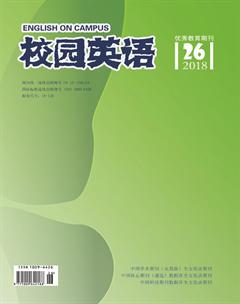Some Views about Taxonomy and Hyponymy


【Abstract】In semantics, there are different opinions about taxonomy and hyponymy. Some semanticists have studied the differences between them. This article will talk about it from several perspectives.
【Key words】taxonomy; hyponymy; semantics
【作者簡介】任晓阳,女,山西运城人,西安外国语大学英文学院,在读研究生,2016级外国语言学及应用语言学专业。
Most semanticists have ignored the sense relationship of taxonomy, a few have regarded taxonomy as a subcategory of hyponymy. This paper is a tentative attempt at establishing taxonomy as an independent sense relationship in the English lexicon. It refers to several relevant semantic books to talk about this question.
When Saeed mentioned taxonomy and hyponymy, he did not explain the difference between them in detail, but classified taxonomy and hyponymy as the same semantic relation. Saeed (2016) states that hyponymy “ is a relation of inclusion. A hyponym includes the meaning of a more general word. The more general term is called the superordinate or hypernym” (p.65).
D.A.curse (2014) states:
Hyponymy is often portrayed as one of inclusion. However, what includes what depends on whether we look at meanings extensionally or intensionally. (P. 135)
In Cruse (1986) the relation exemplified by horse:animal but not stallion:horse was labelled taxonomy, because of its relevance to classificatory systems. taxonomy is thus a subtype of hyponymy. (p. 137 )
Wang Wenbin believes that taxonomy and hyponymy are different.
He (2001) states:
Hyponymy refers to an inclusion relationship. (p. 229)
Taxonomy is the classification structure relation of English words... taxonomy can simply be expressed as “X is a type of Y”, where X is the taxonyms and Y is the superordinate. (p. 233)
For example, the relationship between the three words “cat”, “dog” and “collie”... (p. 235)
Hu Zhuanglin (2011) states that “ Hyponymy is a matter of class membership. The upper term in this sense relation, i.e. the class name, is called superordinate, and the lower terms, the members, hyponyms” (p.101). It can be seen that the relation between the big class and the small class mentioned in the taxonomy is a relationship between the superordinate and hyponym.
To sum up, some semanticists think taxonomy is a subtype of hyponymy, some think taxonomy and hyponymy are different, while others think taxonomy and hyponymy are same. From my perspective, I think taxonomy and hyponymy are different, although they have something in common.
There are some similarities between hyponymy and taxonomy. Both of them reflect the existence of “inclusion” relation between words. However, the two words are included in the relationship do not mean that the “inclusion” in the relationship must be of the same property.
The difference between hyponymy and taxonomy lies in the word sets and members. There are different criteria to classify both of them. Taxonomy is the embodiment of class relations, such as the big class and the small class relations. This relation has strict hierarchy and no more than five levels. Besides, vocabularies of the each level must strictly abide by the same classification standard. Also, some things and concepts are not represented by a corresponding word in a language, resulting in lexical gaps in the language. However, hyponymy is the embodiment of inclusion relationship and is not restricted by “class”. There are no rules for the number of levels.
Although taxonomy and hyponymy reflects the “inclusion”, they can be seen as two kinds of relations that are derived from “inclusion” relationship. They have different word sets and different properties of structure. The distinctions between these two different terms help to deepen our understanding of the language vocabulary system and represents a step forward in the scientific description of the large and complex vocabulary system.
The following is a different way to classify the flower. It provides us a completely new vision and new perspectives to classify something.
References:
[1]Saeed,John I.(2016).Semantics.New Jersey:Wiley Blackwell.

